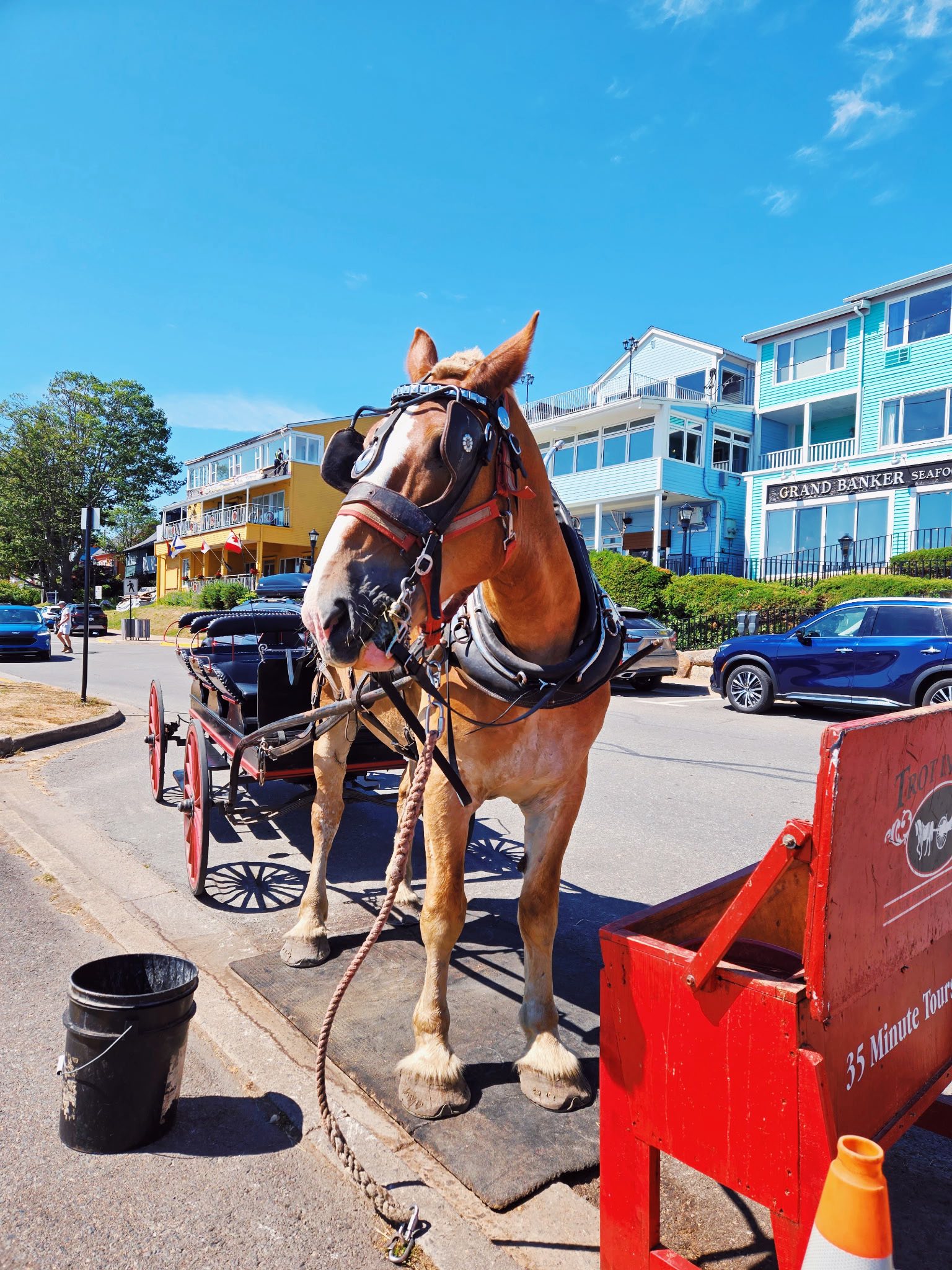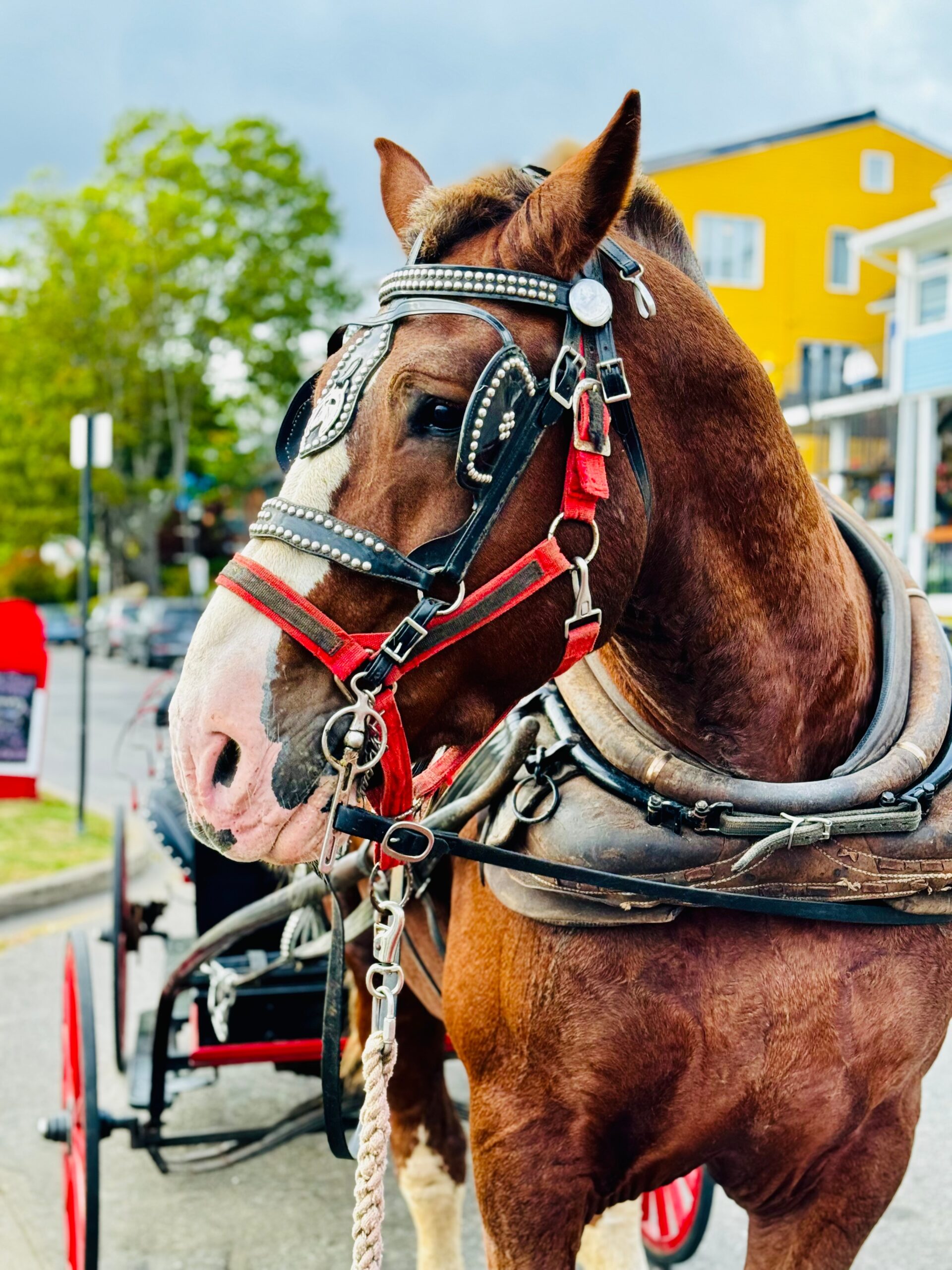For horse owners and carriage operators, protecting equine well-being during hot weather is a responsibility grounded not just in common sense—but in decades of data and scientific research. Equine physiologists, veterinarians, and major animal welfare organizations around the world have thoroughly studied how horses manage heat—and when they’re at risk of overheating. These studies have shaped our understanding of equine heat stress and the practical advice we use today.
The Science of Equine Heat Stress
Horses cool themselves differently from people. Sweating is their main tool, but it works best when both temperature and humidity are in moderate ranges. High humidity makes it harder for sweat to evaporate and cool the body, increasing the risk of heat stress—this is why both numbers matter, not just the thermometer.
Veterinary researchers have established clear markers for when horses face mild, moderate, or extreme risk. For elite equestrian competition, sophisticated indices like the Wet Bulb Globe Temperature (WBGT) are used. For daily life and routine riding, simple, science-based guidelines are widely accepted by the industry.
Mad Barn: An Industry Leader
Mad Barn is a Canadian company recognized as a leader in equine nutrition and welfare. Their guidelines are rooted in published research and echo recommendations from organizations like the American Association of Equine Practitioners, US Equestrian Federation, and Equestrian Canada. Mad Barn’s team includes expert nutritionists, researchers, and veterinarians who help make complex science practical for daily horse care.
One of their simplest and most trusted tools is the Mad Barn Equine Heat Index, designed for quick, in-the-field risk assessment.
Introducing the Mad Barn Equine Heat Index
The Mad Barn Heat Index combines temperature (in Fahrenheit) and relative humidity (%) using the following formula:
Heat Index = Air Temperature (°F) + Relative Humidity (%)
Canadians: Note that Fahrenheit is required for this chart, while most Canadians use Celsius. Make sure to convert the temperature first!
Risk Categories
- <130: Little to no risk (routine care suffices)
- 130–150: Slight risk (begin cooling measures, monitor)
- 151–180: Caution / Elevated risk (reduce workload if necessary, offer extra breaks, use extra monitoring and cooling measures as needed)
- >180: Extreme risk (avoid strenuous activity, aggressive cooling, or postpone work)
How Does Lunenburg, NS Compare?
Using the latest 10–15 years of Lunenburg climate data (2010–2025), here’s how local weather stacks up with the Mad Barn guidelines:
| Month | Avg. High Temp (°F) | Avg. Humidity (%) | Heat Index (F° + %RH) | Risk Band |
|---|---|---|---|---|
| May | 55 | 70 | 125 | Little to no risk |
| June | 63 | 75 | 138 | Slight risk |
| July | 72 | 78 | 150 | Slight risk |
| August | 73 | 78 | 151 | Caution/Elevated risk |
| September | 66 | 80 | 146 | Slight risk |
| October | 57 | 84 | 141 | Slight risk |
- Most Lunenburg summer days fall in the “slight risk” category, even at the height of summer.
- Only August regularly reaches the “caution/elevated risk” threshold—and “extreme risk” days (index >180) are extremely rare, if they happen at all in a given year.
- During unusual heat waves, a handful of days each year might touch the high “caution” zone; true “no work” days are almost nonexistent locally.
Our Approach at Trot in Time
So, what does this mean for Trot In Time? For one, if there is ever an extreme risk day, the horses will not be at work while the temperatures remain that high. The safety and wellbeing of our equine and human team members is too important to compromise.
But, that doesn’t address some of the warmer days where elevated risk is present. Let’s look at how we would handle those.
Working in the Heat
Work horses, like the Belgians we care for, are naturally strong and well-suited for pulling carriages—even in warm weather. These breeds have been used for centuries to perform physical labor, and their physiology allows them to handle heat better than many might think. However, just like humans, horses need support to stay comfortable and safe during hot conditions.
At Trot in Time we take the following steps to foster healthy and safe working conditions for our equine team:
- Rotating Schedules: Horses work on rotation to ensure ample rest at our farm, which features open fields and shaded areas for relaxation between shifts.
- Hydration Breaks: Fresh water is always available after each tour to keep them hydrated and energized.
- Cooling Techniques: On hot days, we wipe down our horses between tours to help them cool off more efficiently.
- Weather Monitoring: Tours are adjusted or canceled if temperatures or humidity levels exceed safe thresholds.
If our team observes signs of discomfort or heat stress in our horses, the issue is immediately flagged and the horse is assessed prior to any further physical exertion.
Recognizing Heat Stress in Horses
While our horses are carefully monitored, understanding the signs of heat stress is essential for anyone concerned about their welfare. Heat stress can develop when a horse’s natural cooling mechanisms—like sweating—are overwhelmed. This is carefully monitored during times of increased risk.
At Trot in Time, our drivers and waterfront staff have each undergone training on Horse Care and Wellness. Here are the key indicators that we look for that indicate a horse may be experiencing heat-related discomfort:
- Increased breathing rate even after resting.
- Excessive sweating or reduced sweating (anhidrosis).
- Hot skin on the neck or chest areas.
- Lethargy or reluctance to move during work.
- Behavioral changes such as drooping ears or a dull demeanor.
We also look for signs of any apathy toward food as this could indicate dehydration (they always have hay at their box, and grain is fed daily at their station, as well as twice daily at the farm).
If any of these signs appear, we immediately cool the horse down with water baths, provide rest, and consult a veterinarian if necessary.
Dehydration: A Key Concern
Dehydration can develop quickly during warm weather or physical exertion but is preventable with proper care.
Signs of Dehydration:
- Loss of skin elasticity (a pinch test on the shoulder should snap back quickly).
- Dry gums or tacky saliva.
- Reduced energy levels or reluctance to work.
Hydration Practices at Trot in Time:
Our horses have constant access to fresh water before and after each tour at their station. Electrolytes are added to their diet when necessary to replenish minerals lost through sweat, and their mid-day grain is soaked, which increases water intake naturally. On hot days, we may also monitor urine output and color to ensure adequate hydration and comfort.
Trot in Time staff are also trained to look for other key issues that may impact the comfort and wellbeing of our horses.
At Trot in Time Carriage Tours, our horses are more than just workers—they’re cherished members of our team and much beloved by their drivers, trainers, and managers alike. Their health, happiness, and well-being are at the heart of everything we do. And, more cynically, it is also just good business to ensure they are in top condition.
If you have any questions at all about our care protocols at Trot in Time, don’t hesitate to reach out mary.gilson@trotintime.ca
References:
- https://madbarn.com/equine-heat-index/
- https://madbarn.ca/heat-stress-in-horses/
- https://madbarn.ca/research-topics/heat-stress/
- https://madbarn.ca/our-story/
- https://weather-and-climate.com/average-monthly-Humidity-perc,lunenburg-nova-scotia-ca,Canada
- https://www.weatherworld.com/yearly-climate/ca/ns/lunenburg.html
- https://weatherspark.com/y/28242/Average-Weather-in-Lunenburg-Nova-Scotia-Canada-Year-Round
- https://www.theweathernetwork.com/en/city/ca/nova-scotia/lunenburg/monthly


